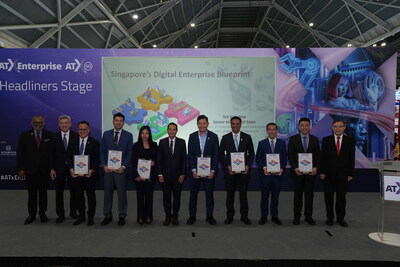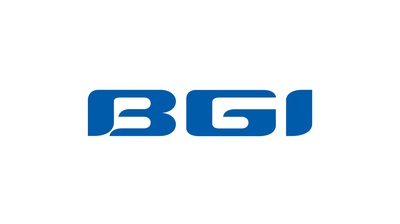Press Release
Role of Technology in Secondary School Education: OWIS

[ad_1]
NEW DELHI, Nov. 27, 2023 /PRNewswire/ — In the tech-driven cityscape of Singapore, the education landscape is evolving rapidly. Technology is a big part of modern classrooms and has brought about a significant shift in how subjects, including the challenging IB curriculum, are taught and absorbed.
This incorporation is not just a trend but a crucial strategy in preparing the younger generation for a future where digital literacy is as essential as traditional academic skills. Read on to understand how educational technology is shaping the future of education in Singapore.
Integrating Technology in Learning
Technology in the classroom extends beyond the use of standard computers and projectors. It’s about creating an interactive, collaborative, and personalised learning environment that resonates with the tech-savvy student body of today. Secondary school in Singapore, like One World International School, have become a hub for innovative technological integration.
- Interactive Learning Tools: With tools like smart whiteboards and educational apps, teachers are able to bring lessons to life. These interactive tools facilitate a more engaging, hands-on learning experience. In secondary schools in Singapore, students use a geometry app to visually explore complex theorems, making the learning process both fun and effective.
- Personalised Learning: Every student learns differently. Technology allows for personalised education, where students can learn at their own pace and in their preferred style. Adaptive learning software, for example, can cater to individual strengths and weaknesses, particularly beneficial in subjects outlined in the IB program in Singapore.
- Augmented and Virtual Reality Experiences: As technology advances, including Augmented Reality (AR) and Virtual Reality (VR) in classrooms provide immersive learning experiences. For instance, a history lesson can be all about taking students on a virtual tour of ancient Rome or a biology lesson offering a 3D exploration inside a human cell. These experiences make abstract concepts tangible and memorable.
- Gamified Learning Platforms: Many schools are leveraging the appeal of gaming to make learning more engaging. Through educational games, students can grasp complex concepts, solve problems, and even develop critical thinking skills.
The Digital Transformation of Homework and Assignments
Homework is different from what it used to be, thanks to technology. Students don’t have to depend on textbooks or libraries alone. The internet has opened up a world of information right at their fingertips.
- Online Research and Resources: The wealth of online resources, including e-books, educational videos, and scholarly articles, provide students with various tools to enhance their research, critical thinking, and analytical skills.
- E-learning Platforms: Platforms like Google Classroom are used extensively in secondary schools in Singapore for submitting assignments, tracking progress, and facilitating teacher-student communication. This virtual environment mimics higher education and workplace settings, equipping students with the necessary digital skills.
The Role of the IB Curriculum in Tech Integration
The IB curriculum is globally recognised for its holistic approach to education. In Singapore, the integration of the IB curriculum with technology has further elevated the standards of secondary education.
- Inquiry-driven Lessons: The IB curriculum emphasises inquiry-based learning, which goes hand-in-hand with technology. Online platforms and digital tools can fuel a student’s curiosity and provide them with avenues to seek answers.
- Collaborative Projects: The IB promotes teamwork. Using digital tools, students can collaborate in real time, share resources, and provide feedback. For example, two students studying at a school in Singapore can work on a project even if they’re in different parts of Singapore.
- E-portfolios: These are digital platforms where students can showcase their achievements, projects, and skills. It’s an excellent tool for self-reflection and a valuable asset when applying for universities.
- Global Connectivity: Given its international nature, the IB curriculum encourages global awareness. Through technology, students can connect with peers from around the world, participate in global projects, or attend international virtual seminars.
- Tech-Enhanced Assessments: The IB curriculum incorporates various assessment methods that gauge a student’s understanding, skills, and application of knowledge. With technology, these assessments can become more interactive and multifaceted. For instance, interactive quizzes or multimedia projects can be used to evaluate a student’s grasp of a particular topic, offering both educators and students insights into learning progress.
- Real-world Problem Solving: Technology combined with the IB curriculum empowers students to tackle real-world challenges. Using data analytics tools, software simulations, or even coding platforms, students can devise solutions to current global issues, ranging from climate change to societal disparities. This not only enhances their technological prowess but also nurtures a sense of responsibility and critical thinking.
- Continuous Learning Platforms: The IB curriculum is rigorous, and students often need additional resources to supplement their learning. With technology, they have access to online tutorials, courses, and forums, ensuring continuous learning. These platforms are particularly beneficial for subjects that demand deeper exploration or for concepts students find challenging.
Challenges and Considerations
While technology has undeniably enhanced secondary education, there are some challenges to consider.
- Screen Time Concerns: Spending prolonged hours in front of screens can be detrimental to students’ health. It’s essential to strike a balance and ensure there are gadget-free intervals.
- Data Privacy: With the rising use of online platforms, data privacy becomes crucial. Schools must invest in secure platforms and teach students about cyber safety.
- Dependence on Technology: It’s essential that students don’t become overly reliant on tech tools. The objective should be to use technology as an aid, not a crutch.
- Distractions and Multitasking: With many apps, websites, and notifications, technology can often be a source of distraction. Multitasking, although it might seem efficient, can hamper deep learning. Teachers and parents need to establish guidelines and foster habits that promote focused learning.
- Encouraging Teachers to Stay Updated: As technology evolves, there’s a continuous need for educators to update their skills. Teachers must receive regular training so they can effectively incorporate new tools into their teaching methods and understand the best practices.
As we move forward in a tech-driven world, the symbiotic relationship between technology and secondary education is evident. Preparing the students for the future, fostering a love for learning, and honing skills that go beyond the traditional curriculum are just some of the perks that technology has to offer in secondary school education. However, it’s crucial to navigate this integration thoughtfully, ensuring that the essence of education isn’t lost amidst the digital tools.
About One World International School (OWIS):
One World International School (OWIS) is a globally recognized International school offering world-class education. Committed to fostering academic excellence and holistic development, OWIS is renowned for its international curriculum and commitment to nurturing well-rounded individuals.
OWIS in India: Expanding its footprint, OWIS proudly operates schools in Banglore, India. This campus reflect OWIS’s commitment to delivering high-quality education, empowering students to excel academically and personally within a global context.
Photo: https://mma.prnewswire.com/media/2285645/Role_of_Technology.jpg
![]() View original content to download multimedia:https://www.prnewswire.com/in/news-releases/role-of-technology-in-secondary-school-education-owis-301997765.html
View original content to download multimedia:https://www.prnewswire.com/in/news-releases/role-of-technology-in-secondary-school-education-owis-301997765.html

[ad_2]
Source link
Press Release
New Study Reveals Majority of Indians Prioritize Nutrition Over Taste, Surpassing Global Average

[ad_1]
Based on a recent survey of urban Indian consumers:
-
Nine out of 10 consumers are searching for protein-rich food compared to seven out of 10 global shoppers. -
The top four qualities consumers look for when buying snacks are (1) natural, (2) heart-healthy, (3) protein-rich and (4) energy-source, all of which come before satisfying cravings. -
Nuts have emerged as one of the most popular snacking choices, with 86% of Indian shoppers report having purchased them in a span of 6 months. -
Urban Indians read nutrition labels more than the global average, reflecting a growing trend towards informed purchasing. -
69% of urban dwellers surveyed have the opinion that plant-based protein is just as good as meat-based protein, exceeding the global average of 55%.
Wonderful Pistachios, the world’s largest grower and processor of pistachios and distributor of California Pistachios in India, released today, World Nutrition Day, the findings of a new global study that sheds light on the snacking habits of urban Indians. The study, commissioned with Material, a leading global research consultancy, included 10 countries and over 12,400 respondents, revealed a new behavioural trend that urban Indian consumers prioritize nutrition over taste when it comes to snacking. This growing preference for healthy snacking emphasizes the importance of good nutrition for overall well-being.
For the India market specifically, the study delved into the snacking habits of 2,415 shoppers across six Indian cities, which represented a population of approximately 35.9 million consumers. Remarkably, a majority of urban Indians (58%) reported basing their food purchasing decisions on nutritional benefits more than taste, exceeding the global average of 52%. Delhi and Ahmedabad lead with over 60% of urban shoppers preferring nutrition in their food. Bengaluru and Chennai follow closely, indicating a nationwide shift towards smarter snacking preferences. In India, Millennials and Gen Z are leading the charge in health-conscious purchasing decisions, with more than 83% of consumers in these age groups reading nutritional labels before buying.
Indian consumers prioritize four key factors when shopping for nutritional snacks: natural (free of artificial colours and preservatives), heart-healthy, protein-rich, and provides energy. Nine out of 10 urban shoppers consciously seek protein-rich food options, compared to the global average of seven out of 10. The focus on nutrition has fueled the rise of nuts as a preferred snack choice, becoming essential to daily eating habits. The study found a staggering consumption of nuts, with 86% of Indian shoppers report purchasing them in a span of 6 months, compared to just 75% globally. With 6g of protein in per 28g serving, California Pistachios are a smart snack choice that provides benefits without sacrificing taste.
Shail Pancholi, Country Director, India, Wonderful Pistachios, commented on the study, saying, “Nuts were traditionally used as garnishes and consumed during festivals, but have now become a popular snack in India, indicating a notable shift in dietary habits. Pistachio consumption in India has doubled in the last six years, as consumer awareness of the nutritional benefits that pistachios offer has grown. Consumers are discovering that pistachios are naturally cholesterol-free, rich in plant-based protein and dietary fiber, and provide over 30 different vitamins and minerals.”
Interestingly, the study found that nuts are the second most preferred snack among urban Indian consumers, with 64% of Baby Boomers and 59% of Gen Z prioritizing nutrition over taste when selecting food. This indicates a growing focus on health across generations, with Baby Boomers focusing on senior wellness and Gen Z reflecting the rise of mindful purchasing. Though on opposite ends of the age spectrum, these two generations take the lead in seeking protein-rich options, as well as preferring natural snacks.
Mumbai tops most of the consideration sets when choosing a snack. Residents opt for natural ingredients (35% vs. the national average of 30%), heart-healthy options (33% vs. 30%), and protein (33% vs. 29%). Chennai residents look for energy-boosting snacks (31% vs. the national average of 29%).
The fact that 69% of urban Indians surveyed have the opinion that that plant-based protein is just as good as meat-based protein reflects a positive shift towards varied dietary preferences. Pistachios are a good source of high-quality complete protein, containing all nine essential amino acids. A 28g serving of pistachios provides 6g of protein, which is 11% of the recommended daily allowance (RDA) according to FSSAI.
The Wonderful Pistachios study unveils a compelling shift in Indian snacking habits. Nuts are evolving from festive treats to a daily snacking staple, fueled by a nationwide preference for more nutritious options. The trend transcends generations, resonating with Gen Z and Baby Boomers alike, underscoring the growing importance of mindful eating in urban India. As consumers increasingly seek natural, heart-healthy, protein-rich, and energy-boosting snacks, the future of Indian snacking appears to be firmly rooted in nutrition and well-being.
Wonderful Pistachios
Wonderful® Pistachios is the world’s largest grower and processor of pistachios, with a global presence in over 70 countries. As a vertically integrated operation, they are experts in every step of the process from tree to shelf, ensuring the highest-quality product every time. In tandem with its Grower Partners, Wonderful Pistachios harvests 125,000 sunny acres (50,000 hectares) of land in California that receive warm days and cool nights, which work in harmony with the rich, natural soils to create the perfect growing climate for high-quality pistachios. They ship 600 million pounds (204 million kg) of nuts worldwide from their advanced processing facilities to ensure the highest standards are met. When it comes to pistachios, Wonderful® Pistachios expertise is unmatched in scale and capacity, paired with warehouses and sales teams worldwide that are well-equipped to provide support at every step of the way.
California Pistachios
California Pistachios are grown and distributed by The Wonderful Company, the world’s largest vertically integrated pistachio processor and marketer located in California’s Central Valley. California Pistachios are Non-GMO, providing a smart, healthy choice for consumers around the world. Sun-ripened in the moderate Mediterranean climate of California, these distinctively green nuts pack taste and contain antioxidants and over 30 different nutrients. California Pistachios in India are available under leading brands and private labels at retail outlets, grocery stores, and online platforms.
For more information about California Pistachios India, please visit www.b2b.wonderfulpistachios.com
[ad_2]
Source link
Press Release
Singapore Prepares Ahead to Leverage Artificial Intelligence for a Better Future

[ad_1]
SINGAPORE, May 31, 2024 /PRNewswire/ — Senior Minister of State for Communications and Information Tan Kiat How launched the Digital Enterprise Blueprint (DEB) at Asia Tech x Singapore (ATxSG) 2024 today. The Blueprint will enable SMEs to harness technology, optimise the way they work, and strengthen digital resilience and cybersecurity across the ecosystem. 50,000 SMEs are expected to benefit over the next five years through four key focus areas:
- Empower enterprises to be smarter by adopting AI-enabled solutions
- Enable enterprises to scale faster through cloud-based and integrated solutions
- Equip enterprises to be safer through improved cyber resilience
- Support enterprises to upskill workers to make full use of digital capabilities
Seven partners have come onboard to pledge their commitment, including Singapore Business Federation, Singapore Computer Society, SGTech, Amazon Web Services, Google, Microsoft and Salesforce.
In collaboration with IMDA and the TechSkills Accelerator for ITE and Polytechnics Alliance, SGTech is launching the Tech Apprenticeship Programme to expand the career pathways of graduates by providing access to industry apprenticeships that offer on-the-job training and development opportunities. Over the next two and a half years, SGTech aims to facilitate the placement of at least 300 apprentices who are fresh or mid-career professionals from polytechnic or ITE backgrounds, and drive the adoption of similar practices that promote more inclusive hiring and career agility.
IMDA and the Singapore Academy of Law (SAL) signed an MoU aimed at uplifting the legal sector’s productivity through the use of GenAI. As part of this partnership, GPT-Legal, a new large language model which is contextualised for Singapore’s legal sector, will be co-developed. The model will be integrated into SAL’s research platform LawNet, which is accessible by 75% of Singapore’s lawyers. SAL will also be penning an MoU with the National University of Singapore and AI Singapore to develop its AI capabilities and create a certification to recognise AI specialists in the legal profession.
Additionally, Tribe and Digital Industry Singapore announced a collaboration with NVIDIA to launch the Ignition AI Accelerator for AI startups to create and bring to market the next wave of advancement in AI solutions. This programme will nurture 15 high-potential startups, equipping them with well-rounded support covering business and technical needs. NVIDIA and Tribe will also collaborate with EnterpriseSG to offer qualified AI startups funding support through the Startup SG Tech scheme, and assist them through the IMDA Accreditation process.
Singapore hosted the final meeting of the UN Secretary-General’s Artificial Intelligence Advisory Body (AIAB) from 28-29 May. As part of the agenda, Singapore facilitated an engagement session between AIAB and the Digital Forum of Small States (Digital FOSS). Digital FOSS Fellows exchanged views with AIAB members on the topic of AI governance, particularly on the implications and challenges faced by small states. Through such efforts, Singapore aims to promote a more inclusive approach towards shaping global AI and digital governance.
Contact:
[email protected]
![]() View original content to download multimedia:https://www.prnewswire.com/in/news-releases/singapore-prepares-ahead-to-leverage-artificial-intelligence-for-a-better-future-302160193.html
View original content to download multimedia:https://www.prnewswire.com/in/news-releases/singapore-prepares-ahead-to-leverage-artificial-intelligence-for-a-better-future-302160193.html

[ad_2]
Source link
Press Release
One in Six Globally Concerned About Colorectal Cancer Screening Costs

[ad_1]
SHENZHEN, China, May 31, 2024 /PRNewswire/ — By 2040, the burden of colorectal cancer (CRC) is projected to increase to 3.2 million new cases and 1.6 million deaths per year representing a 66% and 71% rise in new cases and deaths respectively relative to 2020.

To better address the global burden of CRC and reduce its impact, BGI Genomics has launched the second edition of its global CRC awareness report, covering 1,938 respondents from Brazil (306), China (367), Poland (300), Saudi Arabia (300), Thailand (362), and Uruguay (303):
CRC Screening Gaps Vary Globally: Nearly half (49.3%) of global respondents have never undergone CRC screening, with the highest proportions in Saudi Arabia (62.0%) and Poland (61.0%).
Preference for Fecal Testing Over Colonoscopy: Although colonoscopies are more recognized (33.4%), fecal tests at healthcare facilities are preferred (31.8%), reflecting a trend towards non-invasive methods.
Cost and Fear are Determinants of Screening Choice: Fear of colonoscopy (18.2%) and screening costs (17.7%) are major barriers to CRC screening. Poland (24.7%) and Uruguay (21.0%) show the highest fear of colonoscopy, while Thailand (24.5%) and Brazil (20%) indicate the most concern about costs.
Medical Advice and Family History Drive CRC Screening: Doctor’s recommendations are a major driver for CRC screening (30.5% globally), with Uruguay showing the highest adherence (44.1%). Additionally, those with a family history of CRC are more proactive in screening (64.5%), compared to the general population (35.0%).
Prof. Varut Lohsiriwat from Mahidol University offers his insights to this report. He suggested: “The essence of effective cancer screening lies in the acceptance and adherence of the patient to the screening method. The best screening method is the one that the patient accepts and adheres to because that’s the method that will actually benefit them.”
Dr. Zhu Shida, BGI Genomics Deputy GM, notes: “At BGI Genomics, we focused our efforts on developing advanced molecular biology testing techniques to close the gap [between acceptance and accessibility]. The ultimate goal is to transform colorectal cancer from a life-threatening disease into a manageable condition through widespread, early screening and intervention.”
For more region-level comparisons, access the full BGI Genomics 2024 State of CRC Awareness Report.
All data involved in this report come from the results of an online survey project conducted by BGI Genomics. It only surveys awareness related to colorectal cancer and does not involve personally identifiable data.
Logo – https://mma.prnewswire.com/media/1608027/BGI_Logo.jpg
![]() View original content:https://www.prnewswire.co.uk/news-releases/one-in-six-globally-concerned-about-colorectal-cancer-screening-costs-302159170.html
View original content:https://www.prnewswire.co.uk/news-releases/one-in-six-globally-concerned-about-colorectal-cancer-screening-costs-302159170.html

[ad_2]
Source link

 Fashion8 years ago
Fashion8 years agoThese ’90s fashion trends are making a comeback in 2017

 Entertainment8 years ago
Entertainment8 years agoThe final 6 ‘Game of Thrones’ episodes might feel like a full season

 Fashion8 years ago
Fashion8 years agoAccording to Dior Couture, this taboo fashion accessory is back

 Entertainment8 years ago
Entertainment8 years agoThe old and New Edition cast comes together to perform

 Sports8 years ago
Sports8 years agoPhillies’ Aaron Altherr makes mind-boggling barehanded play

 Press Release8 years ago
Press Release8 years agoUber and Lyft are finally available in all of New York State

 Sports8 years ago
Sports8 years agoSteph Curry finally got the contract he deserves from the Warriors

 Entertainment8 years ago
Entertainment8 years agoDisney’s live-action Aladdin finally finds its stars






